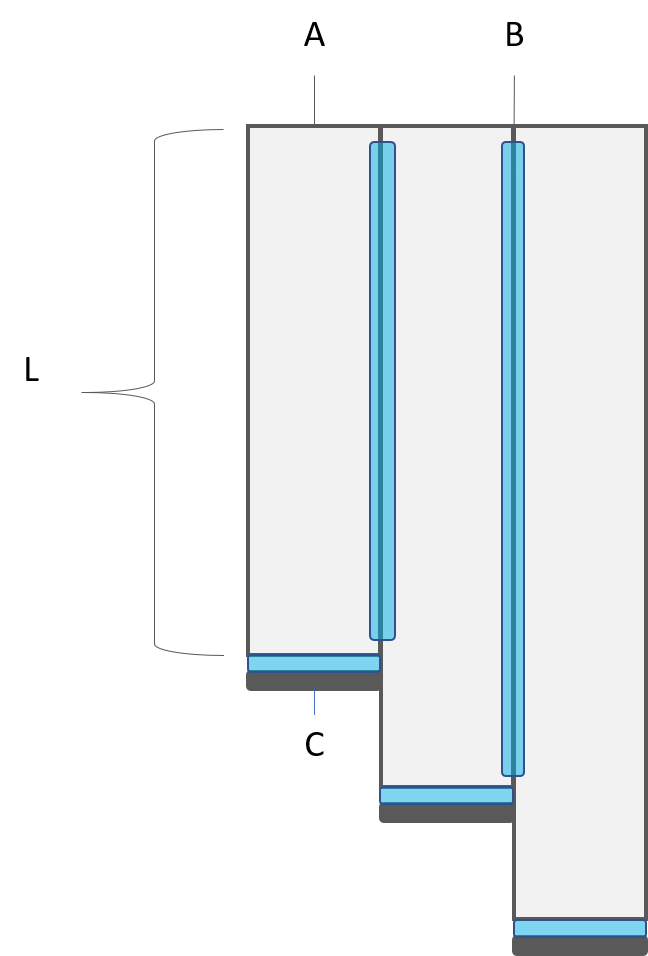Chapter 4 Paixiao
4.1 Overview
The theme of 2019 MIT STEAM Camp is wind and perhaps an exploration of climate data and wind instruments can faithfully incorporate the theme as well as help inform the public about information to which they may not have been exposed. This chapter describes a bit about the paixiao, a wind instrument native to the region around Hong Kong, and presents instruction for construction of a DIY version that can be created inexpensively and with a high degree of customization.
4.2 History and Significance
The paixiao is a traditional wind instrument from China. This type of pan flute was traditionally constructed from bamboo, a common grass from that region. The earliest complete paixiao, an important instrument used in entertainment, military, and orchestra venues, was dated to around 522BC. (Britannica 2019)
4.3 Anatomy
The flute is constructed from a series of (traditionally) bamboo pipes, or short hollow segements of a rigid material. Bamboo, a type of grass, has large, hollow, rigid segments that are ideal for this type of instrument. The pipes may be joined in several ways, including twine or other natural fibers. For this activity, we are substituting bamboo for PVC pipes and natural fibers for common adhesives.
4.4 Science
The science of any musical instrument is complicated and a truly good explanation requires the understanding of many distinct concepts. Very briefly, the paixiao functions properly when air is passed over the open end of a pipe. The air passes down into the pipe and, if everything is correct, the pipe produces a clear note with a frequency closely correlated with the length of the pipe. For more information on panflutes, visit Sarah Tulga. Mark Shepard also has some information on the science of flutes.
4.5 Construction
The paixiao will be constructed from three to five PVC components seen in Figure 4.1. The length (L) of each pipe (A) is variable and determines the frequency of the emitted note. Each pipe is sealed with a small amount of hot glue (B) and a small coin (C). A small bead of hot glue (B) should be applied along the length of the joint between each pipe. The top of each pipe should be sanded smooth for comfort and level at the time of assembly. In other words, the mouthpiece of each pipe should be level with each of the neighboring pipes.

Figure 4.1: PVC paixiao construction
Assembly steps:
Cut PVC pipes to the desired length.
Sand each pipe smooth on each end to remove excess plastic and improve comfort when playing.
For each pipe, use a hot glue gun to apply a thin bead of glue around one end and attach a small coin to seal the pipe end.
Lay all pipes down and align the mouthpiece ends.
Apply a small bead of hot glue along the areas between each pipe.
Hold the pipes together briefly until the hot glue solidifies.
Decorate your paixiao if desired.
Your PVC paixiao should now be fully assembled. Wipe down the pipes with an alcohol pad before attempting to play!
4.6 Tuning
As with the PVC didgeridoo, pipe length determines the frequency of the note. Some recommended pipe lengths and associated notes are provided to get you started, but feel free to experiment and create your own custom tuning! These tuning suggestions are from Phil Tulga.
| Key | Length (mm) |
|---|---|
| C | 154 |
| D | 136 |
| E | 120 |
| G | 98 |
| A | 87 |
4.7 Play
To play the paixiao, hold the flute perpendicular to the floor in front of your mouth. You will need to blow air across, and slightly down into, each pipe to achieve a clear note. Practice this method and try alternating between tight and loose lips until you find the “sweet spot” that results in a loud, clear sound.
You can watch this video to pick up some paixiao performance tips: Paixiao.
References
Britannica. 2019. “Paixiao.” britannica.com. https://www.britannica.com/art/paixiao.